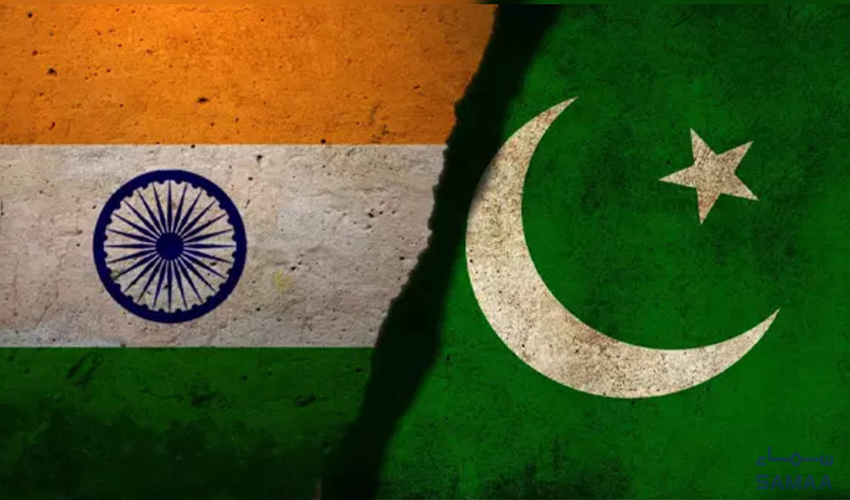In a noteworthy event, a Pakistani team recently conducted inspections in Jammu’s Kishtwar district. This visit marks the first such inspection since the revocation of Jammu & Kashmir’s special status in 2019.
These inspections underscore the ongoing disputes and technical objections raised by Pakistan regarding certain projects. The visit also signals a potential for renewed dialogue and cooperation within the framework of the Indus Water Treaty.
The delegation focused on two key projects:
1. Kishanganga Hydroelectric Project on the Jhelum River basin
2. Ratle Hydroelectric Project on the Chenab River
Decoding the Indus Water Treaty
Signed in 1960, the Indus Water Treaty stands as a landmark water-sharing agreement between India and Pakistan. Mediated by the World Bank, this treaty allocates the waters of the Indus River system between the two nations. The core principles of the IWT include:
– Western Rivers Allocation: Pakistan receives the waters of the Indus, Jhelum, and Chenab rivers.
– Eastern Rivers Allocation: India gains access to the waters of the Ravi, Beas, and Sutlej rivers.
– Limited Western Rivers Usage: India can utilize the Western Rivers for specific purposes, primarily hydroelectric power generation, subject to certain restrictions.
The Indus agreement’s endurance for over six decades highlights its significance in managing water resources in a region often marked by geopolitical tensions.
Resolving Disputes: The Indus Mechanism
A key strength of the IWT lies in its structured approach to conflict resolution. The treaty outlines a three-step process for addressing disputes:
1. Permanent Indus Commission (PIC): This body, comprising representatives from both countries, meets at least annually. The PIC serves as the first line of communication and problem-solving for issues arising from the treaty’s implementation.
2. Neutral Expert Intervention: If the PIC fails to resolve a dispute, particularly on technical matters, a Neutral Expert is appointed. This expert provides an impartial assessment and interpretation of the treaty’s provisions.
3. Court of Arbitration: For disputes that persist beyond the Neutral Expert’s determination, the treaty allows for the formation of a seven-member arbitral tribunal. This Court of Arbitration delivers binding decisions on complex issues.
This multi-tiered approach aims to provide a comprehensive framework for addressing conflicts, from minor technical disagreements to major interpretational disputes.
Current Indus Tensions: Design and Operation Concerns
The ongoing disagreements between India and Pakistan primarily center around the design features and operation of certain hydroelectric projects. The Kishenganga and Ratle Hydroelectric Projects have become particular points of contention. Pakistan has raised objections to various aspects of these projects, citing concerns about their impact on water flow and availability downstream.
These disputes highlight the delicate balance required in implementing the Indus Water Treaty, especially as both countries seek to maximize their water and energy resources within the treaty’s constraints.
Challenges Facing the Indus Water Treaty
Despite its longevity, the IWT faces several significant challenges:
1. Power Project Hurdles: Ongoing disputes create obstacles for establishing new hydroelectric projects, potentially impacting energy development in the region.
2. Water Usage Limitations: The treaty’s restrictions on water usage from Western Rivers affect agricultural potential, particularly in Jammu and Kashmir.
3. Trust Deficit: A lack of collaboration and mutual trust between India and Pakistan complicates the treaty’s implementation.
4. Inconsistent Data Sharing: Regular exchange of hydrological data, as envisioned in the treaty, remains inconsistent.
5. Narrow Focus: The IWT primarily serves as a conflict-resolution mechanism rather than fostering broader cooperation and trust-building.
6. Article IX Ambiguity: The dispute resolution system outlined in Article IX of the treaty requires clarification to prevent recurring challenges to hydroelectric projects.
7. Climate Change Oversight: The original treaty did not account for climate change, global warming, or environmental impact assessments, creating new challenges in water management.
8. Groundwater Gap: The IWT focuses solely on surface water, neglecting the critical issue of groundwater depletion.
9. Ineffective Permanent Indus Commission: The PIC’s ability to resolve disputes effectively has been questioned.
Moving Forward: Strengthening the Indus Agreement
To address these challenges and ensure the continued relevance of the Indus Water Treaty, several approaches should be considered:
1. Enhanced Dialogue: Utilize the Permanent Indus Commission more effectively for direct, open discussions between India and Pakistan.
2. Technical Expertise: Engage independent technical experts to resolve disputes over infrastructure design and operation, similar to the successful resolution in the Baglihar Dam case.
3. Mediation Opportunities: Explore third-party mediation options, potentially involving the World Bank or other respected international organizations, when bilateral negotiations reach an impasse.
4. Legal Recourse: As a last resort, make use of the treaty’s arbitration panel to address unresolved disputes.
5. Long-Term Vision: Address broader political issues through sustained dialogue and cooperation to create a more stable foundation for water-sharing agreements.
6. Climate Adaptation: Incorporate provisions for addressing climate change impacts on water resources within the treaty framework.
7. Data Transparency: Implement robust mechanisms for regular, transparent sharing of hydrological data between the two countries.
8. Groundwater Management: Expand the treaty’s scope to include provisions for sustainable groundwater management.
Conclusion: Renewing the Indus Commitment
The Indus Water Treaty, while imperfect, remains a crucial agreement for water management in the Indian subcontinent. Its weaknesses stem not just from the document itself, but from the complex relationship between India and Pakistan. As experts call for renegotiation, both nations must approach the treaty with a renewed commitment to equitable resource sharing.
In an era of increasing water scarcity and climate uncertainty, the importance of the Indus agreement cannot be overstated. By addressing its shortcomings and building on its strengths, India and Pakistan have the opportunity to transform the IWT into a model of transboundary water cooperation.
ALSO READ: How did the British army, using Indian soldiers, manage to defeat the larger Indian armies
